Dominican Republic Flag Meaning
Four quarters alternating blue and red separated by a white cross, with the national coat of arms in the center, representing liberty, the blood of heroes, salvation and peace, and the Christian faith of the Dominican people.
- Continent
- North America
- Adopted
- 1844
- Ratio
- 2:3
- Colors
- blue, red, white
- Designer
- Juan Pablo Duarte
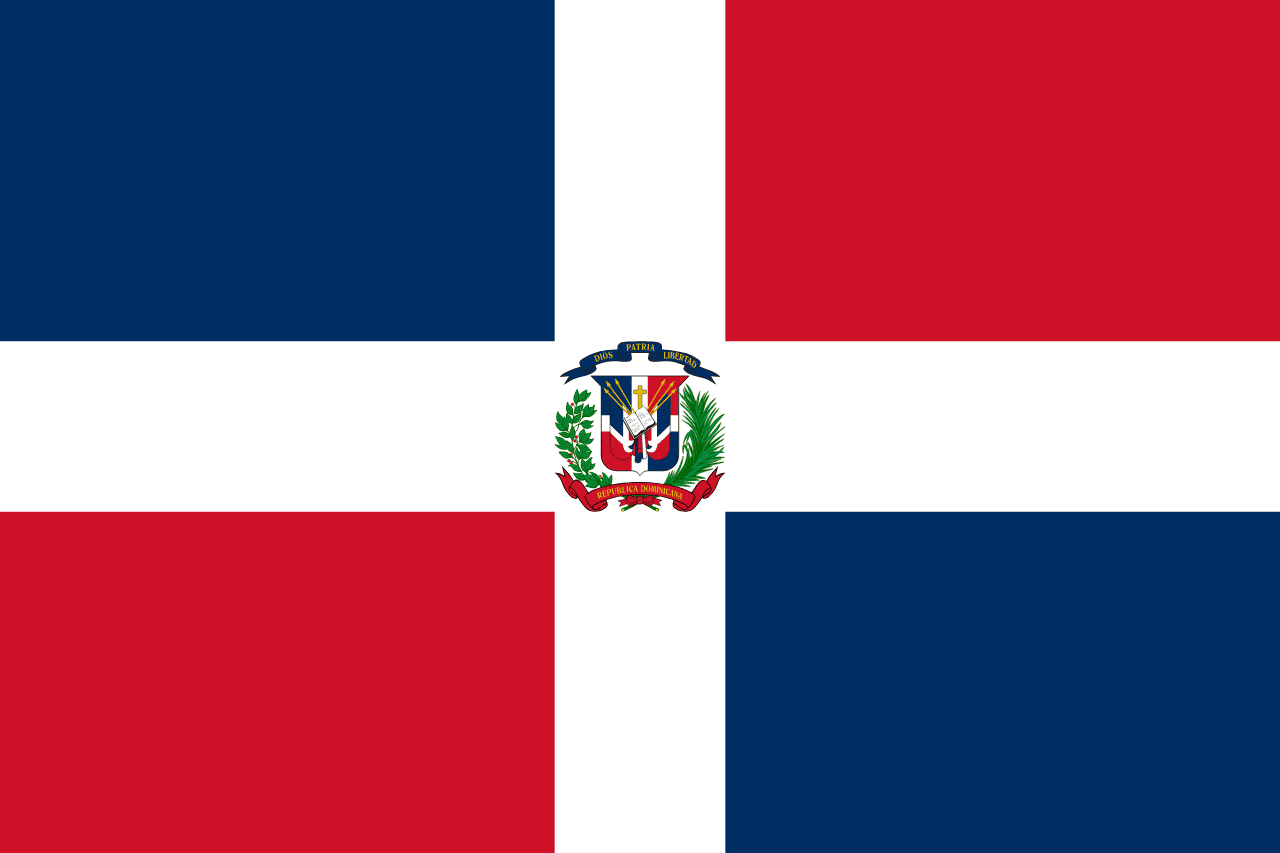
Symbolism
Blue Quarters: Represent liberty and the ideals of progress, symbolizing the sky above the island and the Dominican people's aspiration for freedom and democratic governance after centuries of foreign domination.
Red Quarters: Represent the blood shed by heroes who fought for independence, symbolizing the courage and sacrifice of those who died in the struggle against Haitian rule and for Dominican sovereignty and self-determination.
White Cross: Represents salvation, peace, and the Christian faith that unites the Dominican people, symbolizing the Catholic heritage brought by Spanish colonization and the desire for harmony and spiritual guidance.
National Coat of Arms: Features a Bible, cross, palm and laurel branches, and a ribbon with the national motto 'Dios, Patria, Libertad' (God, Fatherland, Liberty), representing faith, peace, victory, and the core values of the Dominican Republic.
History
- Pre-1492: The island of Hispaniola was inhabited by the Taíno and other indigenous peoples who had developed sophisticated societies with complex social structures and extensive trade networks across the Caribbean.
- 1492-1795: Christopher Columbus landed on the island in 1492, establishing the first permanent European settlement in the Americas, with Spanish colonization bringing Christianity, slavery, and the exploitation of indigenous peoples and African slaves.
- 1795-1822: The eastern part of the island changed hands between Spain and France multiple times, with periods of French rule under the Treaty of Basel and brief independence movements before Haitian unification of the entire island.
- 1822-1844: Haiti unified the entire island of Hispaniola under President Jean-Pierre Boyer, imposing Haitian rule, language, and customs on the Spanish-speaking eastern region, creating tensions that would lead to independence movements.
- February 27, 1844: Juan Pablo Duarte and the secret society La Trinitaria declared independence from Haiti, establishing the Dominican Republic and adopting the current flag design to represent the new sovereign nation.
- 1861-1865: The Dominican Republic voluntarily returned to Spanish rule under President Pedro Santana, but the War of Restoration led by patriots restored independence and reestablished the flag as a symbol of sovereignty.
- 1916-1924: United States military occupation governed the country during World War I era, implementing infrastructure improvements while the flag remained as a symbol of Dominican identity and hopes for restored independence.
- 1930-1961: Rafael Trujillo's dictatorship transformed the country through modernization but also brutal repression, with the flag representing both national pride and the suffering under one of Latin America's most ruthless dictators.
- 1961-Present: Democratic transition following Trujillo's assassination has seen the flag represent the Dominican Republic's development into a stable democracy and major tourist destination, despite ongoing economic and social challenges.
Trivia
- The Dominican Republic shares the island of Hispaniola with Haiti, making it one of only three islands in the world shared by two sovereign nations.
- Santo Domingo, the capital, is the oldest European city in the Americas, founded in 1496, and contains the first cathedral, university, and hospital in the New World.
- The flag represents the birthplace of merengue music and bachata, both of which have become internationally popular and are recognized by UNESCO as cultural heritage.
- Dominican Republic is the most visited destination in the Caribbean, with its beaches, resorts, and colonial architecture attracting millions of tourists annually.
- The country has produced numerous Major League Baseball players, including Hall of Famers like Pedro Martínez and David Ortiz, making baseball the national sport.
- Pico Duarte is the highest peak in the Caribbean at 3,087 meters, located in the Cordillera Central mountain range that runs through the center of the island.
- The flag flies over a country where Spanish is the official language, but many Dominicans also speak Haitian Creole due to immigration and shared island geography.
- Dominican Republic has significant mining operations, particularly for gold, silver, and nickel, contributing to its economy alongside tourism and agriculture.
- The country has a rich tradition of carnival celebrations, with elaborate masks and costumes, particularly during the February carnival season in various cities.
- Lake Enriquillo is the Caribbean's largest lake and lowest point below sea level, home to American crocodiles and flamingos in this unique ecosystem.
- The flag represents a country with significant income inequality, where luxury resorts coexist with poverty, reflecting broader development challenges in the Caribbean.
- Dominican cuisine features dishes like mangu, moro, and tostones, blending Taíno, Spanish, and African influences into a distinctive Caribbean culinary tradition.
- The country's sugar industry was historically central to its economy, with sugar plantations shaping the social structure and bringing waves of immigrant workers.
- Dominican Republic has made significant progress in renewable energy, particularly wind power, as part of efforts to reduce dependence on imported fossil fuels.
- The flag represents a nation where Catholicism is predominant but Protestantism and other religions are growing, reflecting changing religious demographics in the modern era.
Related Countries
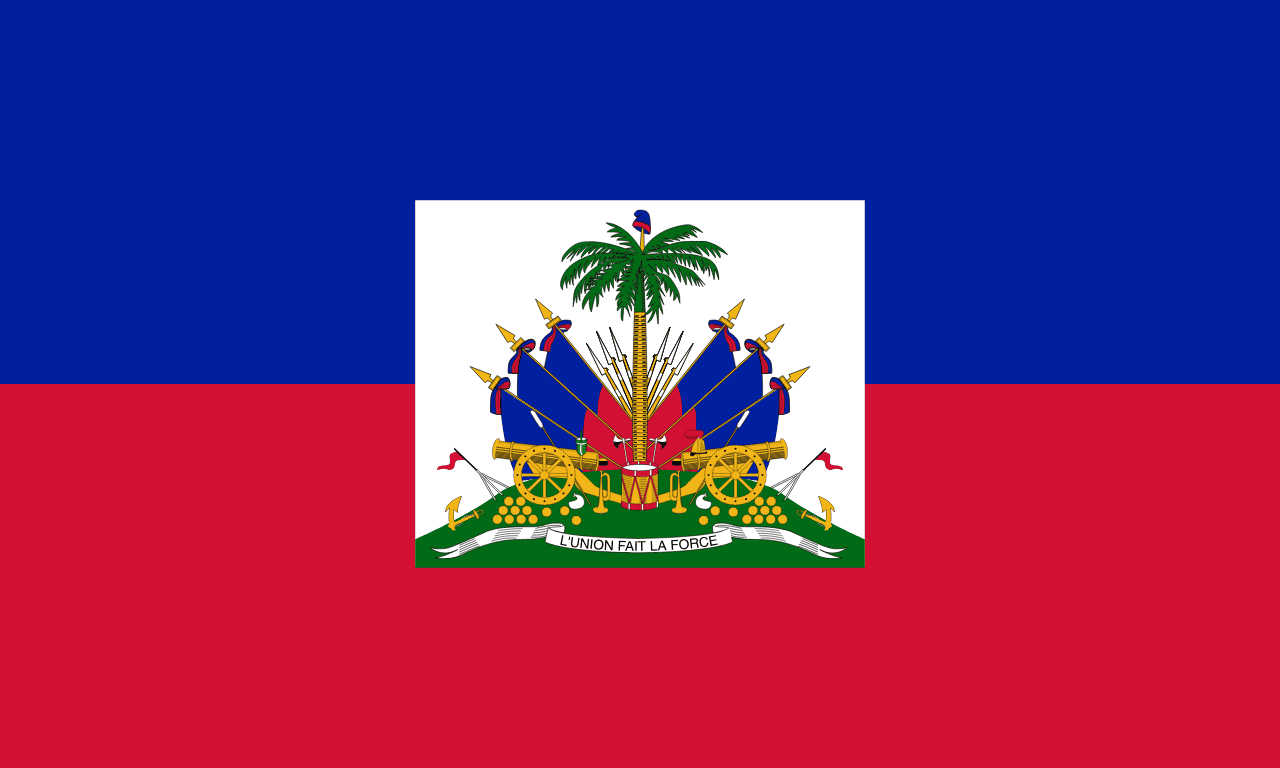
Haiti
North America
Two horizontal stripes of blue over red, representing the union of black and mixed-race Haitians and the blood shed for independence, making Haiti the first independent black republic and symbol of successful slave revolution.
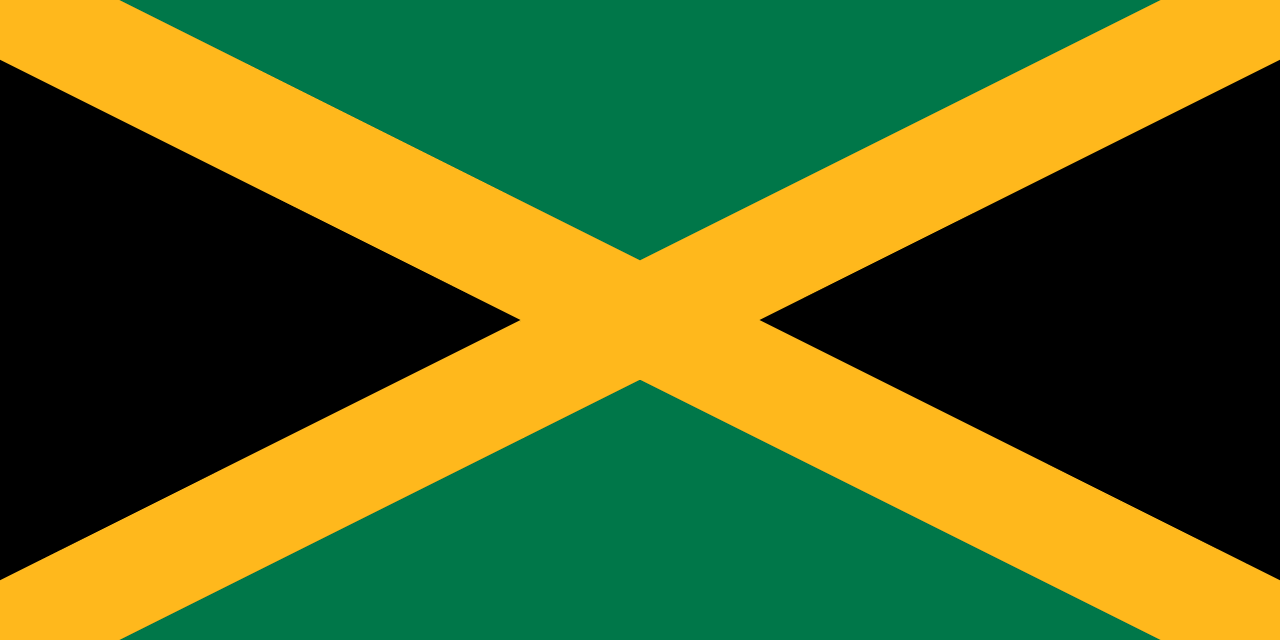
Jamaica
North America
A diagonal cross pattern dividing the flag into four triangles, with green triangles at top and bottom, black triangles at hoist and fly, and yellow diagonal cross, symbolizing the natural beauty, strength of the people, and golden sunshine of Jamaica.
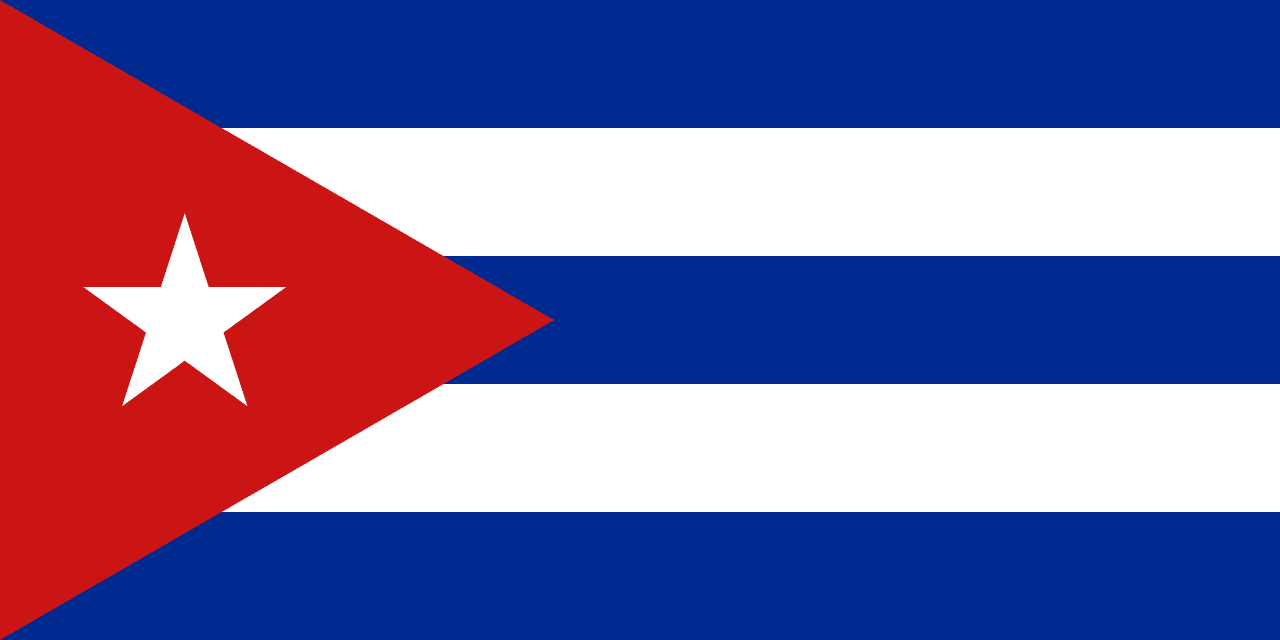
Cuba
North America
Five horizontal stripes alternating blue and white with a red equilateral triangle at the hoist containing a white five-pointed star, representing the three original provinces, purity, the blood of martyrs, and the independence of Cuba.
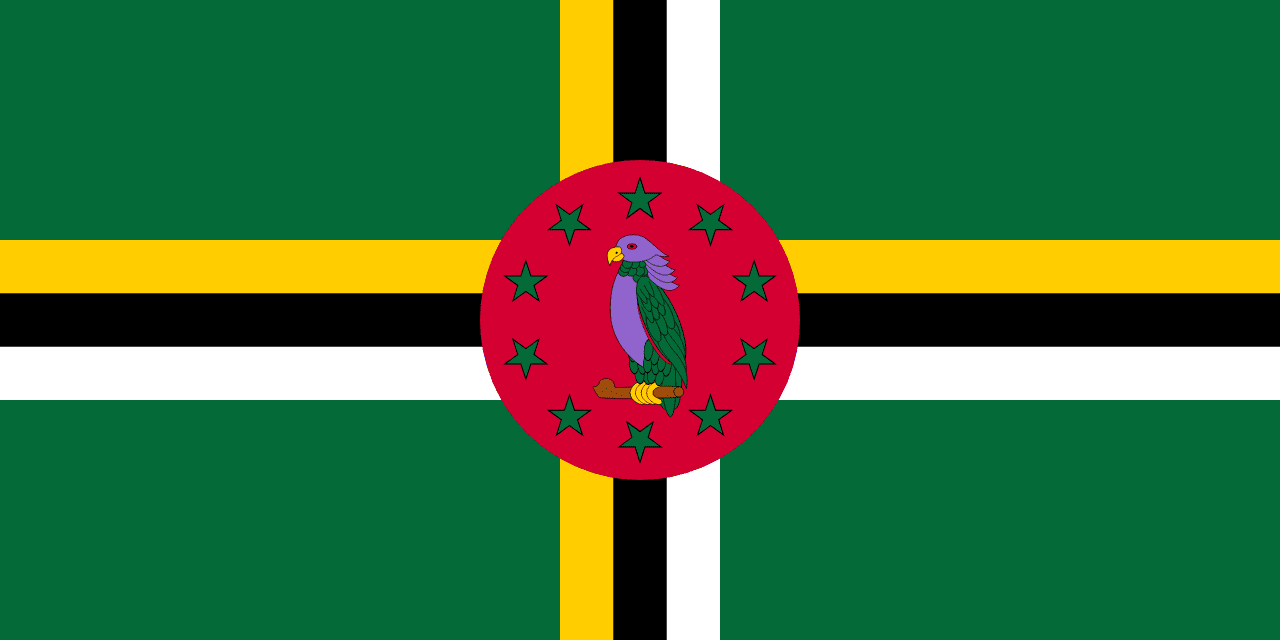
Dominica
North America
A green field with a cross pattern of yellow, black, and white stripes and a red circle in the center containing the Sisserou parrot, representing the lush vegetation, the Trinity, racial harmony, and the unique wildlife of the 'Nature Island of the Caribbean.'
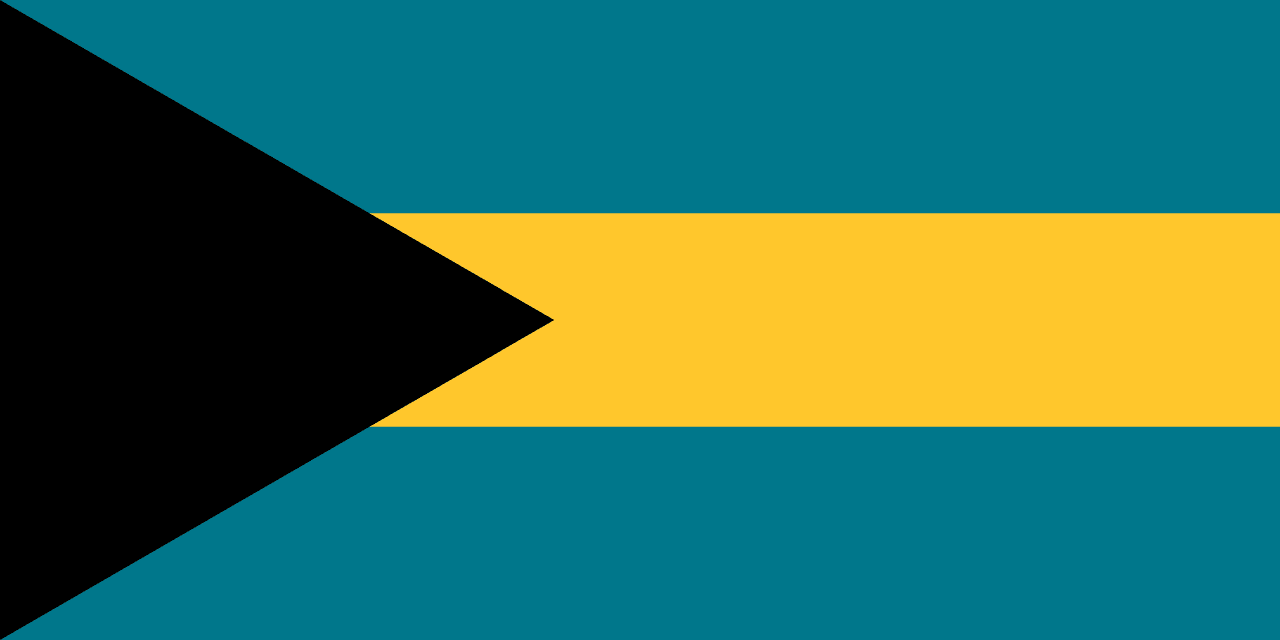
Bahamas
North America
Three horizontal stripes of aquamarine, gold, and aquamarine with a black equilateral triangle at the hoist, representing the waters surrounding the islands, the golden beaches and sunshine, and the strength and determination of the Bahamian people united in their love for their homeland.
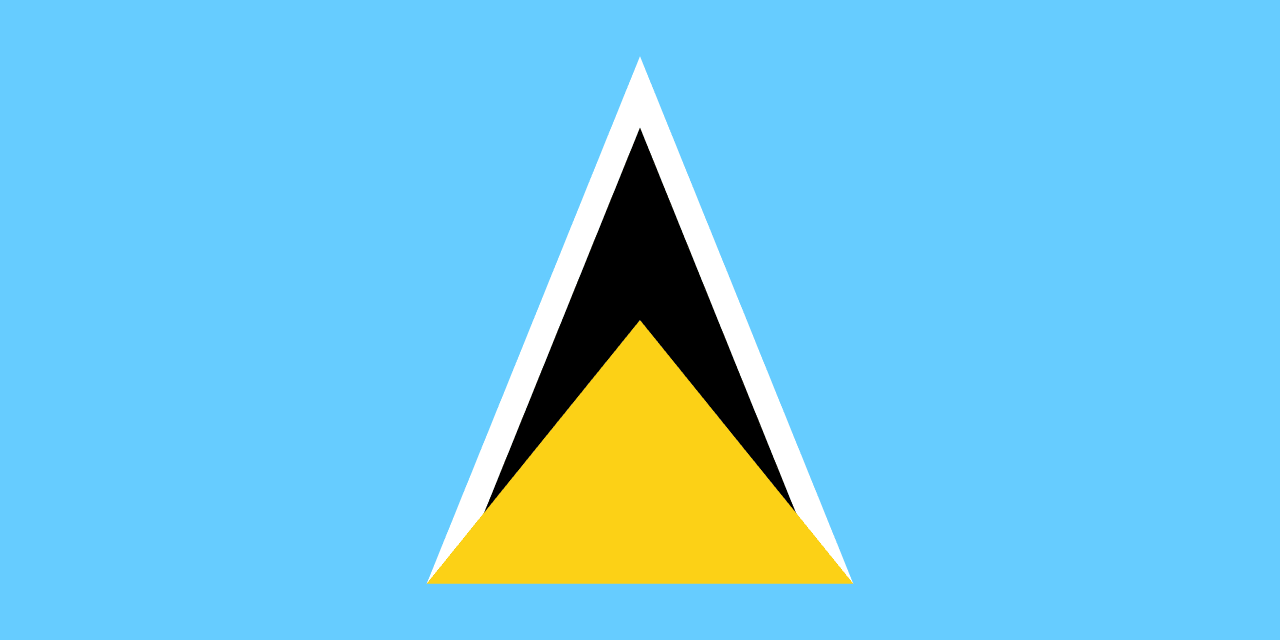
Saint Lucia
North America
A cerulean blue field with a gold isosceles triangle in front of a white-edged black triangle. The design reflects the island’s natural features and cultural heritage.